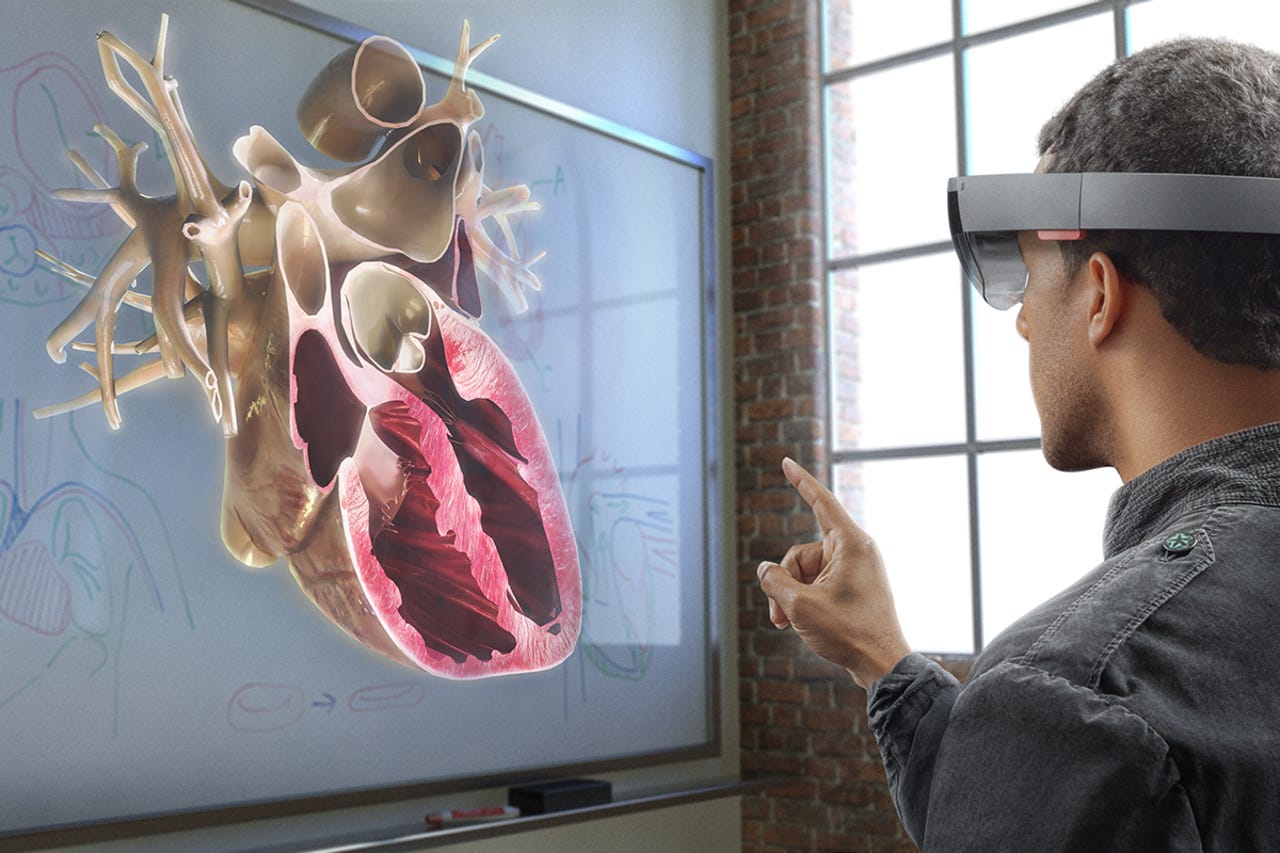11 unexpected ways universities are using the Microsoft HoloLens


Let's say you're a technology company with a novel AR platform you'd like to see firmly embedded in the culture as the "grown up" version of mixed reality, something capable of doing important work. You're going to market the heck out of it, of course, and you're going to incubate a developer community that can wring out as much potential as possible.
See als
The other thing you're going to look for is key early adopters, and there's a specific subset of adopters that are particularly valuable in this space: Academics working in research institutions.
That might seem counter-intuitive. Technology transfer from colleges and universities -- the process by which grad lab tech makes it to market -- is pretty anemic, and researchers, who depend on competitive grants to keep their labs open, are famously parsimonious when it comes to acquiring new equipment.
But Microsoft, which is able to leverage its long view thinking with the HoloLens in a way that smaller startups in need of a quicker return simply can't, as well as its ability to give away a lot of free product without affecting the bottom line, has taken dead aim at academics in a kind of guerrilla strategy aimed at seeding tomorrow's novel AR technology. In 2016, Microsoft's University Relations group, which had just sprouted into existence, began giving away HoloLens headsets to research institutions in North America in order to inspire innovative uses for augmented reality (AR) in labs and classrooms at leading research universities.
"In the first year that our group existed, we wanted to do something big and impactful," said Kent Foster, Microsoft University Relations Lead. "That's how the HoloLens seeding program began."
Microsoft gave away 180 HoloLens Commercial Suite devices to leading AR/VR researchers across 17 universities in North America. So what happened? Well, a lot of cutting edge AR development and deployment that's now being rolled out to academic conferences, university technology transfer offices, and investors.
Mirroring a trend in enterprise AR deployment, where training is a primary use case, some of the university deployments focused on education. For example, one program recipient deployed HoloLens to improve accessibility and learning experiences for visually impaired students. Another professor used the HoloLens to teach augmented anatomy to nursing students.
But other projects leaned hard into how AR might change the way people interact with their environment in crucial day-to-day settings. At the University of Michigan, for example, students in Professor David Chesney's Electrical Engineering class partnered with Dr. Prashant Mahajan, University of Michigan Chief of Pediatric Emergency Medicine, to identify potential HoloLens applications that would streamline hospital logistics, comfort patients, and provide lifesaving care. Chesney illustrates one example of long-distance critical care that could result from software using this technology:
Must-see offers
"Imagine an EMT at an emergency scene, wearing a HoloLens and communicating with a clinician in a hospital. It allows more in-depth care. The EMT can act as the eyes and the hands of the clinician. They can use the HoloLens to see the patient, put virtual marks on patient that the EMT can act on, all the while talking to the EMT on the scene."
At the University of British Columbia, Professor of Neuroscience Claudia Krebs developed HoloBrain, an application that offers 3D reconstructions of basal ganglia nuclei (a part of the brain associated with habits, voluntary movement, and emotions). The project, developed in collaboration with Microsoft BigPark Vancouver and Microsoft Garage Interns, has secured additional funding from the Canadian Federal Mitacs funding organization. Soon the project will utilize datasets from Functional Magnetic Resonance Imaging (fMRI) studies, giving more granularity to the data.
Researchers at the MIT Media Lab created Mathland, an app inspired by Seymour Papert's vision for a "math land" where people would learn mathematics as naturally as they would learn a language in a foreign land. Another app, Wordsense, helps users learn a second language by detecting objects in the user's environment and labeling them in the target language, as well as by providing a word's definition, sounding it out, and using it in a sentence.
Finally, an app called HoloArt allows users to paint with Holograms in mixed reality. That project would likely appeal to a University of Michigan researcher, who's developing curricula centered on augmented and virtual reality. The classes are actually being offered at UM, and evidently there's a waiting list.
Four HoloLens projects that resulted from the Microsoft seeding program—at Carnegie Mellon University (CMU), UBC, MIT, and the University of Waterloo—have either presented or been asked to present at academic or technology conferences.
The CMU HoloLens project, called Lumilo, for example, is an app developed for HoloLens that is currently used in high schools in the Pittsburgh area. For their HoloLens project on interactive design and civic data, the University of Waterloo was accepted as a presenter at the 2018 ACM CHI Conference on Human Factors in Computing Systems, an international conference of Human-Computer Interaction, in Montreal, Quebec. Using a mix of augmented reality tools including HoloLens, PhD students from Waterloo and the University of Toronto will run a workshop in which participants construct "prototype mixed reality interfaces for engaging the informational layer of the built urban environment." The goal? Harmonious co-existence between humans and non-human systems.
That's a good example of the kind of AR app that private industry probably wouldn't develop. Who knows what will come of it; maybe it will languish in the annals of unread conference papers. Or maybe it'll spark a harmonious collaboration that bursts out of the classroom in unexpected ways.
In either outcome, Microsoft is counting it a win.